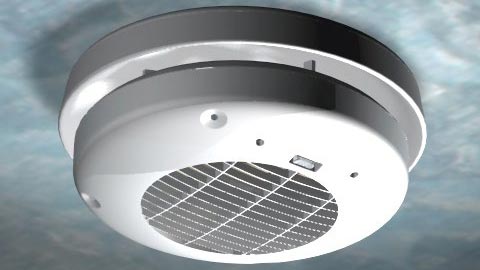Innovation requires solid modeling
Innovation requires solid modeling

Case Study
Innovation requires solid modeling
Applied Science Venture
Designing creative consumer goods demands high-end functionality such as on-screen interference checking and realistic rendering
Translating patentable technology into marketable products
Applied Science Venture (SGP) Pte. Ltd. was established in 2003. Headquartered in Singapore and housed in its own building – the 170,000-square-foot, multi-purpose NutzCentre – the Applied Science Venture (ASV) mission can be summarized in one word: innovation. “We are always aspiring to innovate,” explains Gerard Chua, R&D engineer at ASV. “Our mission is to create practical, user-friendly products by applying the principles of science and engineering. This kind of innovation creates new opportunities and new markets for our customers.”
ASV creates patentable technology which it then rapidly translates into marketable products. To do this, company officials strongly believe in collaboration through joint R&D ventures with local and foreign companies. They strive to create positive, long-term business relationships and take pride in seeing concepts evolve and mature.
Increasing product complexity requires 3D
ASV’s niche is practical and user-friendly products that can be used in everyday life. Some examples include pest control products, air cleaners for homes and vehicles, equipment that helps people save electricity, cup holders and mugs that grip onto surfaces to prevent spilling, water bottles and thermal bags that keep drinks hot or cold for hours.
ASV used 2D CAD previously but the increasing complexity of its products made this approach impractical. “We needed to move to 3D because our products were growing more complex and it was difficult to visualize them in 2D,” explains Chua. The company now uses the Solid Edge® solution from Siemens Digital Industries Software for all its design needs. “It is a powerful and excellent platform,” he adds. The migration to 3D went smoothly, in large part because Solid Edge was easy to learn. “Within the first day I was creating models in Solid Edge and I completed my first design, which was a fairly complex remote control, within two weeks,” says Chua. He also notes that he had excellent support from the Singapore-based Solid Edge reseller, GIM Solutions.
Interference checking reduces errors
Chua uses Solid Edge every day to design plastic and metal parts, which he then assembles onscreen to visualize how things fit together and to check for interferences. This has been the most significant benefit of 3D, he says. “This is so totally different from 2D,” Chua explains. “Our products now have 50 to 60 parts and interference checking is absolutely critical to reducing design errors. Solid Edge makes this possible.” Another advantage of Solid Edge, he finds, is that the ease of making changes to a design. “Modification takes too long with other software. With Solid Edge this is very easy.”
Chua says it takes very little time with Solid Edge to develop a basic concept for an initial design review. Further along in the design process, he takes advantage of Solid Edge Virtual Studio to create highly realistic images of prospective products. “We have more effective design reviews because we can render images with actual materials such as plastic and ceramic to get a total look at the product,” he says. When a design is finished Chua uses Solid Edge to quickly generate accurate drawings and bills of material from the 3D models.
